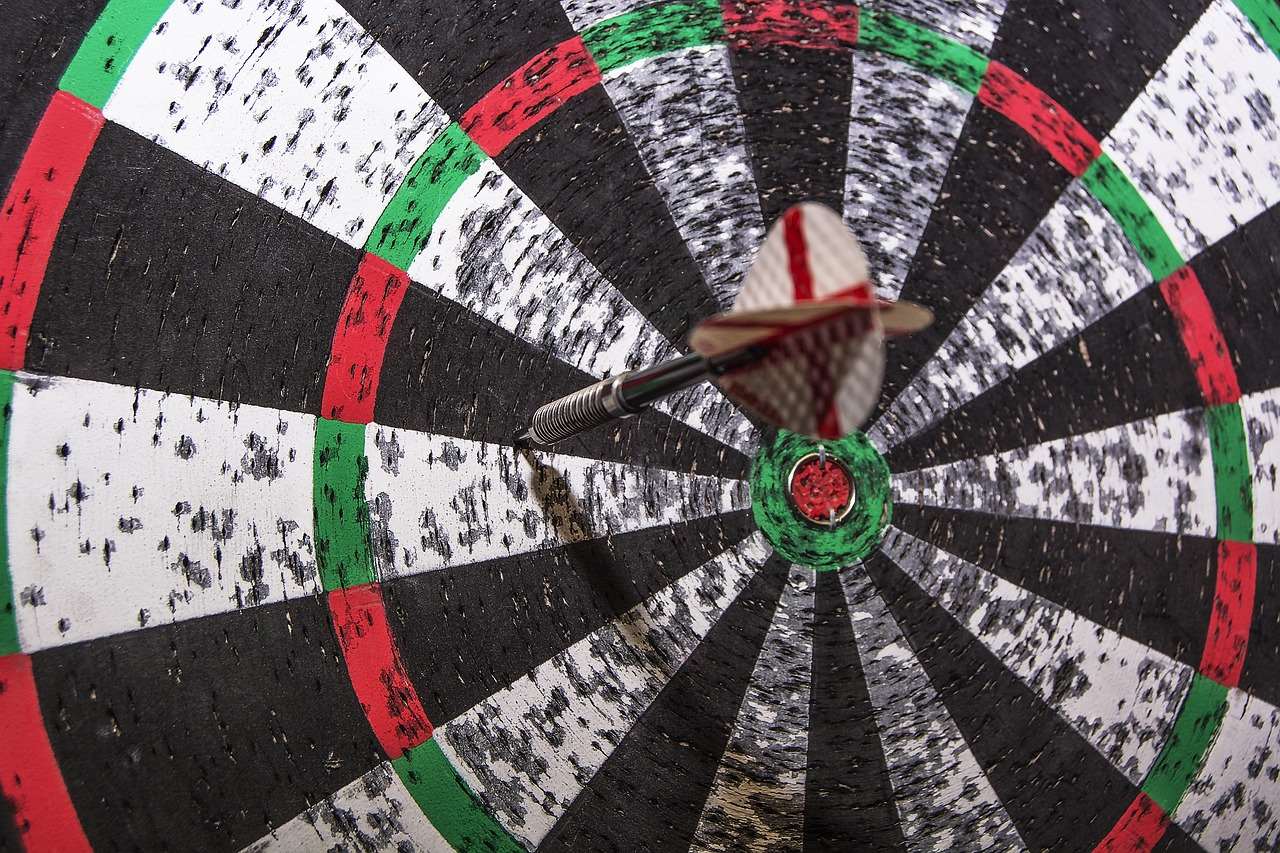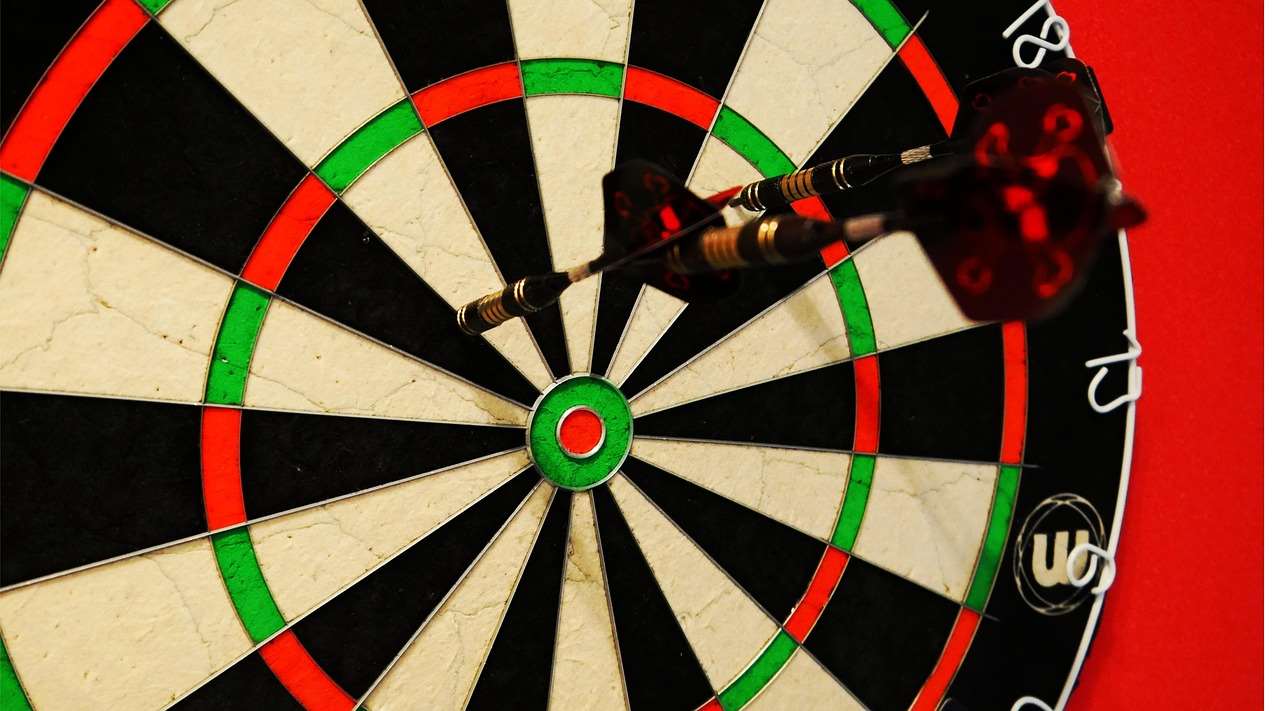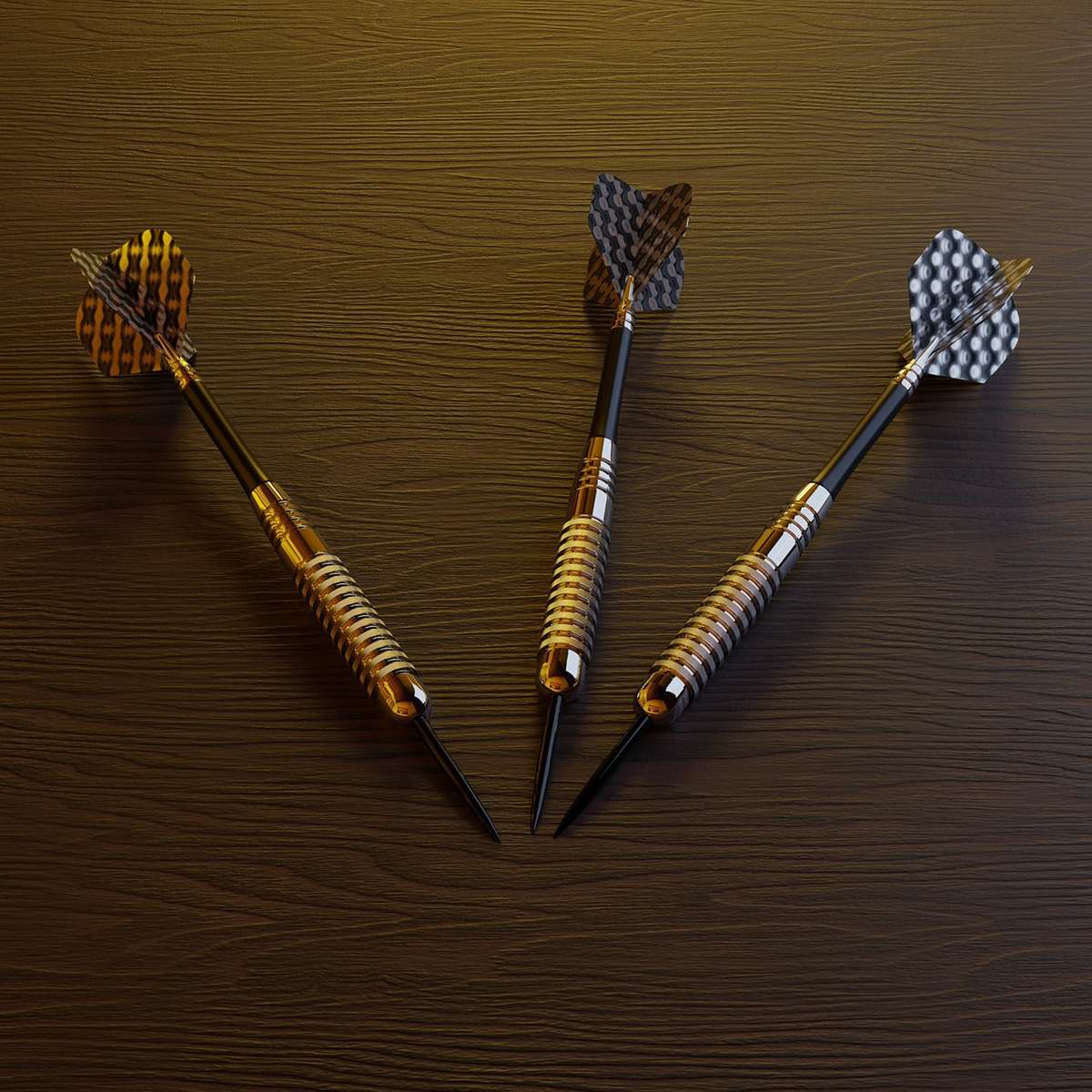Grasping the difference between **’legs’ and ‘sets’** is crucial for understanding the structure of many competitive sports, especially darts; a leg is a single game, while a set is a group of legs. This article provides **simplified rules for understanding ‘legs’ and ‘sets’**, covering their roles in various game formats and strategies for maximizing your performance.
⚠️ Still Using Pen & Paper (or a Chalkboard)?! ⚠️
Step into the future! The Dart Counter App handles all the scoring, suggests checkouts, and tracks your stats automatically. It's easier than you think!
Try the Smart Dart Counter App FREE!Ready for an upgrade? Click above!
Simplified Rules for Understanding ‘Legs’ and ‘Sets’ in Darts
In darts, the terms **’leg’ and ‘set’** define the format of a match. A leg is essentially one individual game of darts, usually starting from a score of 501 or 301 and ending when a player reaches zero with a double. A set, on the other hand, is a collection of legs, and a player needs to win a certain number of legs to win a set. This structured approach adds layers of strategy and endurance to the game. Understanding the interplay between these elements is key to excelling, especially when adapting darts rules for beginners.

What is a Leg?
Let’s break down the concept of a leg in more detail. Think of it as a single, self-contained darting contest. Here’s what you need to know:
- Starting Score: Typically, a leg starts with each player having a score of 501, though some variations use 301.
- Objective: The goal is to be the first player to reduce your score to exactly zero by throwing darts.
- Finishing on a Double: A crucial rule in most standard dart games is that the final dart thrown to reach zero must be a double (landing in the outer ring of the board). This adds an extra layer of challenge and skill.
- Winning a Leg: The player who successfully “checks out” (reaches zero with a double) first wins the leg.
What is a Set?
Now, let’s move on to understanding sets. A set elevates the competition by requiring players to win multiple legs. Key features of a set include:
- Number of Legs: A set consists of a predetermined number of legs. For example, a set might require a player to win three legs.
- Winning a Set: The player who wins the required number of legs first wins the set.
- Format Variation: The specific number of legs needed to win a set can vary depending on the tournament or match format. Common formats include best-of-three sets, best-of-five sets, and so on.
The Importance of Strategy in Legs and Sets
Understanding the difference between legs and sets isn’t just about knowing the rules; it’s about using that knowledge to develop a winning strategy. In fact, even when exploring fun dart game variations with modified rules, keeping track of legs and sets is key.
Leg-Specific Strategy
Each leg presents a unique opportunity and challenge. Here are some strategic considerations for individual legs:
- Opening Scores: A strong start can put pressure on your opponent. Aim for consistent high scores like 60 (treble 20) or 100.
- Checkout Strategy: Plan your checkout route in advance. Consider what numbers you need to leave yourself to have a good shot at a double. For example, leaving yourself with 32 (double 16) is a common strategy.
- Responding to Your Opponent: Pay attention to your opponent’s scores and adjust your strategy accordingly. If they’re scoring heavily, you might need to take more risks to keep up.
Set-Specific Strategy
Sets introduce a broader strategic element. Here’s how to think strategically about sets:
- Pacing Yourself: Recognize that a set requires endurance. Don’t burn yourself out in the early legs.
- Adapting to Your Opponent: Observe your opponent’s strengths and weaknesses over the course of the set. Adapt your strategy to exploit their weaknesses and minimize their strengths.
- Mental Fortitude: Sets can be mentally taxing. Maintain a positive attitude and stay focused, even if you lose a leg or two.

Common Game Formats and the Role of Legs and Sets
The concepts of **’legs’ and ‘sets’** are central to various dart game formats. Let’s look at a couple of the most popular ones:
501
501 is arguably the most common dart game format. Here’s how legs and sets typically work in 501:
- Legs: Each leg starts with both players having a score of 501. The first player to reach zero with a double wins the leg.
- Sets (Optional): In casual games, sets might not be used. However, in competitive play, matches are often structured as best-of-three sets, best-of-five sets, or similar formats.
- Match Winner: The player who wins the majority of the sets wins the match.
For those starting out, simplified 501 game rules for novice players can be a great introduction to the format.
Cricket
Cricket is another popular dart game format, but it differs significantly from 501 in terms of scoring and gameplay. However, the principle of legs and sets can still apply:
- Legs: In Cricket, players must “close” specific numbers (20, 19, 18, 17, 16, 15, and the bullseye) by hitting them three times before their opponent does. A leg is won when a player closes all the required numbers and has a higher score than their opponent.
- Sets (Optional): As with 501, sets are often used in competitive Cricket matches to determine the overall winner.
Tips for Mastering Legs and Sets
Now that you have a solid understanding of **simplified rules for understanding ‘legs’ and ‘sets’**, here are some tips to help you master these concepts and improve your dart game:
- Practice Regularly: Consistent practice is essential for improving your darting skills. Focus on both your scoring accuracy and your checkout ability.
- Develop a Routine: Establish a pre-throw routine to help you stay consistent and focused. This might involve a specific stance, grip, or breathing technique.
- Analyze Your Performance: Keep track of your scores and identify areas where you can improve. Are you struggling with certain numbers? Are you missing doubles? Use this information to guide your practice.
- Learn from Others: Watch professional dart players and study their techniques. Pay attention to their strategies for both individual legs and entire sets.
- Stay Calm Under Pressure: Dart matches can be stressful, especially when playing in sets where each leg counts. Learn to stay calm and focused, even when you’re behind.

The Psychological Aspect
Don’t underestimate the psychological aspect of darts, especially when dealing with legs and sets. Your mental state can significantly impact your performance. Here’s how to cultivate a winning mindset:
- Visualization: Before a match, visualize yourself throwing well and winning. This can boost your confidence and help you stay focused.
- Positive Self-Talk: Replace negative thoughts with positive affirmations. Remind yourself of your strengths and your ability to succeed.
- Resilience: Accept that you’re not going to win every leg or every set. When you lose, don’t dwell on it. Learn from your mistakes and move on to the next opportunity.
Common Mistakes to Avoid
Understanding **simplified rules for understanding ‘legs’ and ‘sets’** also involves recognizing and avoiding common pitfalls. Here are some mistakes that dart players often make:
- Ignoring the Importance of Doubles: Doubles are crucial for finishing legs in 501. Neglecting your double practice can be a costly mistake.
- Lack of a Checkout Plan: Going to the board without a clear checkout plan can lead to confusion and missed opportunities. Always know what numbers you’re aiming for and how you’re going to get there.
- Getting Discouraged Easily: Dart matches can be unpredictable. Don’t let a few bad legs ruin your entire set. Stay positive and keep fighting.
- Overthinking: Sometimes, the best approach is to simply relax and throw. Overthinking can lead to tension and poor performance.

Advanced Strategies for Legs and Sets
Once you have a strong grasp of the fundamentals, you can start exploring more advanced strategies for legs and sets. Here are a few ideas:
- Targeting Specific Doubles: Instead of always aiming for the same double, learn to target a variety of doubles. This can give you more flexibility when you’re setting up your checkout.
- Varying Your Scoring Shots: Don’t always rely on the same scoring shots. Learn to hit different trebles and single numbers to keep your opponent guessing.
- Playing the Percentages: In certain situations, it might be strategically advantageous to play for a higher percentage shot, even if it means leaving yourself with a slightly more difficult checkout.
Adapting to Different Opponents
A key aspect of advanced strategy is learning to adapt to different opponents. Every player has their own strengths and weaknesses, and you need to be able to adjust your game accordingly. Consider these factors:
- Scoring Style: Does your opponent prefer to score consistently or go for big scores?
- Checkout Ability: Is your opponent a good finisher? Do they prefer certain doubles?
- Mental Toughness: How does your opponent react to pressure? Do they get flustered easily?
By carefully observing your opponent, you can identify opportunities to exploit their weaknesses and maximize your chances of success. This becomes even more crucial when modifying rules for mixed-level dart players to keep the game balanced.

Conclusion
Mastering the difference between **’legs’ and ‘sets’** is fundamental to enjoying and excelling in darts. By understanding the structure of the game and developing effective strategies for both individual legs and entire sets, you can significantly improve your performance. Remember to practice consistently, stay focused, and adapt to your opponents. With dedication and the right approach, you’ll be well on your way to becoming a formidable dart player.
Now that you understand the fundamentals of legs and sets, why not put your knowledge to the test? Find a local darts league or challenge your friends to a game. You can also review Basic Darts Fundamentals for Beginners to brush up on the basics. Start playing and improving your skills today!
Hi, I’m Dieter, and I created Dartcounter (Dartcounterapp.com). My motivation wasn’t being a darts expert – quite the opposite! When I first started playing, I loved the game but found keeping accurate scores and tracking stats difficult and distracting.
I figured I couldn’t be the only one struggling with this. So, I decided to build a solution: an easy-to-use application that everyone, no matter their experience level, could use to manage scoring effortlessly.
My goal for Dartcounter was simple: let the app handle the numbers – the scoring, the averages, the stats, even checkout suggestions – so players could focus purely on their throw and enjoying the game. It began as a way to solve my own beginner’s problem, and I’m thrilled it has grown into a helpful tool for the wider darts community.